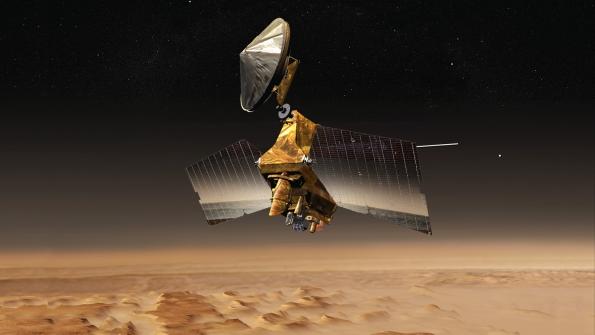NASA's Mars Reconnaissance Orbiter Maneuvers For InSight

NASA's Mars Reconnaissance Orbiter altered its course around the red planet this week, repositioning itself to prepare for its communications record and playback duties as the agency's InSight lander streaks through the Martian skies to a hoped for touchdown on Sept. 28, 2016.
The 75 second maneuver unfolded on July 29, advancing MRO's near polar orbit crossings of the Martian equator by about 30 minutes to 2:30 p.m., local solar mean time.

"This will put us in the right place at the right time," Dan Johnston, the MRO project manager, noted in a status update from NASA's Jet Propulsion Laboratory.
As InSight plunges into the thin Martian atmosphere and descends, MRO will listen and record data from the lander for playback to Earth. It's a crucial mission role that MRO filled during the "7 minutes of terror" that marked the drama filled landing of NASA's Curiosity rover on Mars on Aug. 6, 2012 as well as for the Phoenix lander mission arrival in 2008.
While acting as a communications relay for those and other Mars missions, MRO has been an eager observer, furnishing scientists with a steady flow of high resolution photographs of the rugged red planet terrain since its own arrival in 2006.
InSight is undergoing preparations for liftoff during a Mar. 4-30, 2016 launch window, which will dictate the spacecraft's entry, descent and landing.
With a successful touchdown, the U.S. and European instrumented lander will probe the Martian interior to learn more about its core, mantle and crust and how the interior layering evolved. Those studies and observations of tectonics and meteoric impacts should advance scientists understanding of how Mars and the solar system's other rocky planets evolved.
As Insight pursues a planned two year prime mission, MRO will maneuver again to resume its regular crossings of the Martian equator at 3 p.m. and 3 a.m., local solar time.
MRO will still have enough fuel to conduct normal maneuvering around Mars for another 19 years, according to JPL estimates.